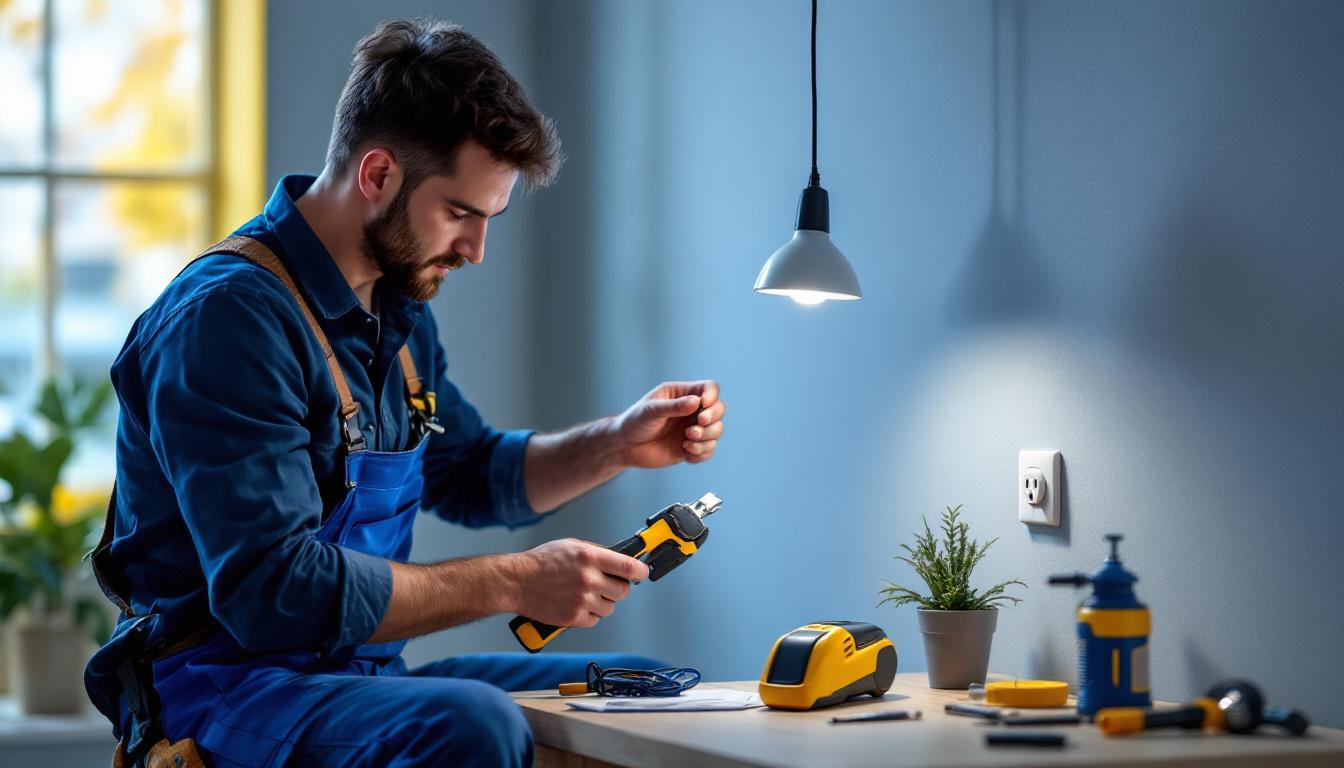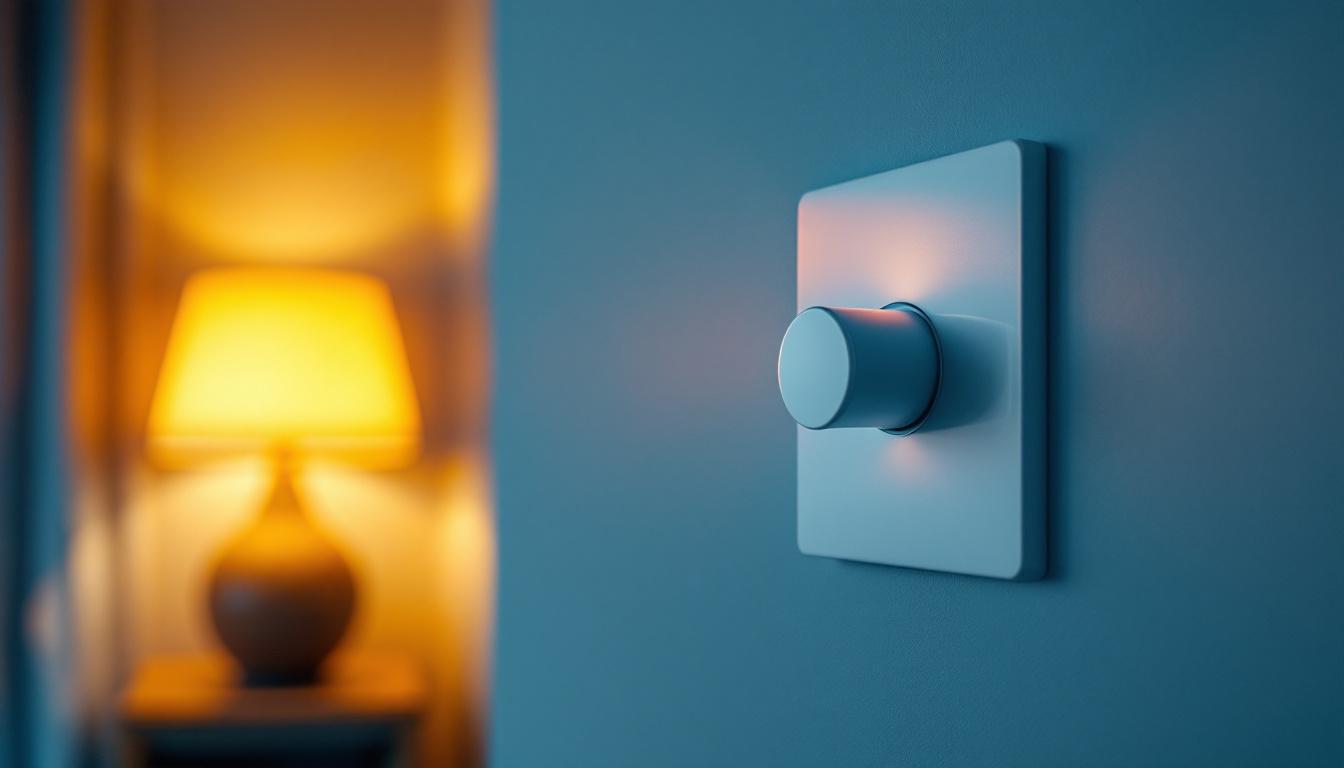
Hanging outlets are more than just convenient points for plugging in lighting fixtures—they are critical components that influence the overall efficiency, safety, and aesthetics of lighting installations. For lighting contractors, mastering the use and installation of hanging outlets can significantly impact project outcomes, client satisfaction, and long-term maintenance.
At its core, a hanging outlet is an electrical receptacle or connection point installed in a ceiling or overhead structure, designed to support and power lighting fixtures. Unlike standard wall outlets, these are strategically placed to accommodate suspended or pendant lighting, track systems, or other overhead electrical devices. The placement and installation of hanging outlets require precise planning, adherence to electrical codes, and an understanding of the lighting design intent.
When considering hanging outlets, it is essential to take into account the weight and type of lighting fixtures that will be used. For example, heavier fixtures may necessitate additional support structures or specialized mounting hardware to ensure safety and stability. Moreover, the choice of materials and finishes for the hanging outlets can greatly influence the overall aesthetic of the space. Selecting outlets that blend seamlessly with the ceiling design or match the fixtures can enhance the visual appeal and create a cohesive look throughout the installation.
Furthermore, the integration of smart technology into hanging outlets is becoming increasingly popular. With the rise of smart lighting solutions, contractors can now offer clients the ability to control their lighting through mobile apps or voice commands. This added functionality not only enhances user experience but also promotes energy efficiency by allowing users to easily adjust lighting levels based on their needs. As smart home technology continues to evolve, staying informed about the latest innovations in hanging outlet design and installation will be crucial for contractors looking to remain competitive in the market.
Lighting design often demands flexibility. Hanging outlets provide the infrastructure needed to support various fixture types and configurations without extensive rewiring. For contractors, this means being able to adapt installations to client preferences or changes in design plans without starting from scratch.
For example, in commercial spaces like retail stores or galleries, lighting needs frequently change to highlight different products or exhibits. Hanging outlets allow for easy repositioning or swapping of fixtures, minimizing downtime and labor costs. This flexibility is a significant selling point for contractors when advising clients on lighting solutions. Moreover, the ability to easily modify lighting setups can enhance the overall aesthetic of a space, allowing for dynamic displays that can evolve with seasonal trends or special events. This adaptability not only meets the immediate needs of the client but also positions the space for future growth and innovation.
Electrical safety cannot be overstated. Hanging outlets must be installed following strict electrical codes and standards to prevent hazards such as electrical shocks, fires, or fixture failures. Lighting contractors who understand the nuances of hanging outlet installation reduce the risk of non-compliance and the costly repercussions that follow.
Properly installed hanging outlets ensure that the weight of the fixture is supported securely and that electrical connections are insulated and protected. This is especially important in environments where fixtures are heavy or where the ceiling structure may not be designed to bear additional loads without reinforcement. Additionally, the use of high-quality materials and components in hanging outlet installations can significantly enhance durability and reliability, reducing the likelihood of maintenance issues down the line. Contractors who prioritize safety and compliance not only protect their clients but also build a reputation for quality workmanship that can lead to repeat business and referrals.
Furthermore, regular inspections and maintenance of hanging outlets can help identify potential issues before they escalate into serious problems. This proactive approach not only ensures ongoing safety but also fosters a culture of responsibility among contractors and clients alike. By emphasizing the importance of routine checks and adhering to best practices in installation, contractors can create a safer environment that instills confidence in their clients regarding the integrity of their lighting systems.
One of the first considerations when installing hanging outlets is the load capacity. Lighting contractors must evaluate the weight of the fixtures and ensure the ceiling or mounting surface can support them. This often involves coordinating with structural engineers or using specialized mounting hardware.
Failing to account for load capacity can lead to fixture detachment, posing safety risks and potential damage to property. Using rated supports and anchors designed for the specific weight and type of fixture is essential.
Wiring for hanging outlets differs from standard outlets due to their placement and the types of fixtures they serve. Contractors must select appropriate cable types, conduit, and connectors that meet local electrical codes and the environmental conditions of the installation site.
Additionally, the method of connection-whether through junction boxes, quick-connect fittings, or specialized connectors-affects both the ease of installation and future maintenance. Using standardized connection methods can simplify fixture replacement and reduce labor time.
Modern lighting installations often incorporate control systems such as dimmers, occupancy sensors, or smart lighting networks. Hanging outlets must be compatible with these systems, requiring contractors to plan wiring routes and outlet placements accordingly.
For instance, integrating hanging outlets with addressable lighting controls allows for precise control over individual fixtures or groups, enhancing energy efficiency and user experience. Contractors who understand these integrations can offer more sophisticated lighting solutions that add value to their services.
Clients appreciate lighting installations that are both functional and adaptable. Properly installed hanging outlets contribute to a clean, professional finish and make future modifications straightforward. This level of quality builds trust and encourages repeat business and referrals.
Moreover, contractors who proactively educate clients about the benefits of hanging outlets demonstrate expertise and a commitment to long-term value, setting themselves apart in a competitive market.
When hanging outlets are installed correctly, the likelihood of electrical faults or fixture failures decreases. This translates to fewer service calls and warranty claims, saving contractors time and money while preserving their reputation.
Good installation practices also simplify troubleshooting and repairs, as standardized outlet placements and connections make it easier to identify and address issues.
Efficient installation of hanging outlets streamlines the lighting installation process. Contractors can plan wiring runs and fixture placements more effectively, reducing labor hours and material waste.
Additionally, the flexibility afforded by hanging outlets can prevent costly redesigns or rewiring if the client changes their lighting preferences during or after the project.
Many lighting projects involve existing buildings where ceiling access is restricted. Installing hanging outlets in these conditions requires creativity and specialized tools. Contractors often use flexible conduit, access panels, or surface-mounted raceways to overcome these obstacles.
Planning ahead by conducting thorough site assessments helps identify potential access issues early, allowing for proactive solutions that keep the project on schedule.
Hanging outlets must be discreet yet accessible. Achieving this balance can be tricky, especially in high-end residential or commercial spaces where design aesthetics are paramount.
Contractors can collaborate with lighting designers and architects to select outlet types and placements that blend seamlessly with the décor. Using color-matched covers, recessed boxes, or custom enclosures can enhance the visual appeal without compromising functionality.
Lighting contractors often work with a variety of fixture brands and styles, each with unique mounting and wiring requirements. Ensuring that hanging outlets are compatible with these fixtures requires careful specification and sometimes custom solutions.
Maintaining strong relationships with manufacturers and suppliers can provide access to technical support and specialized components that facilitate compatibility.
Before installation, detailed planning is essential. This includes mapping outlet locations, verifying structural support, and coordinating with other trades such as HVAC and ceiling installers. Comprehensive documentation ensures everyone involved understands the installation requirements and sequence.
Using digital tools like CAD software or BIM (Building Information Modeling) can enhance accuracy and collaboration among project stakeholders.
Electrical codes and standards evolve regularly. Lighting contractors must stay informed about the latest requirements related to hanging outlets, including grounding, load ratings, and accessibility.
Joining professional organizations, attending training sessions, and consulting code publications help contractors maintain compliance and avoid costly mistakes.
Quality matters. Using certified components and reliable tools reduces the risk of installation errors and equipment failure. Contractors should source hanging outlets, mounting hardware, and wiring from reputable manufacturers to ensure durability and safety.
Regular maintenance of tools and ongoing training in installation techniques also contribute to consistent, high-quality workmanship.
As lighting technology advances, hanging outlets will continue to evolve. Integration with smart building systems, wireless power transmission, and modular lighting solutions are areas where hanging outlet design and installation will play a pivotal role.
Lighting contractors who embrace innovation and deepen their expertise in hanging outlet installation will be well-positioned to lead in this dynamic field, delivering cutting-edge solutions that meet the demands of modern clients.
As you look to the future of lighting installations and embrace the evolving world of hanging outlets, choose LumenWholesale for your lighting needs. Our commitment to providing contractors with top-quality, spec-grade lighting products at unbeatable wholesale prices ensures that you can deliver exceptional value and performance to your clients. With an extensive selection that meets the highest industry standards and the convenience of free shipping on bulk orders, you can trust LumenWholesale to equip you with reliable, high-performance lighting for every project. Don’t settle for less—Wholesale Lighting at the Best Value is just a click away. Experience the perfect blend of quality, affordability, and convenience today.

Discover essential tips from lighting contractors on effectively using frame LED lights to enhance any space.

Discover the latest trends in decorative solar lights for yards that every lighting contractor should be aware of.

Discover how a dimmable light switch enhances safety in lighting installations, reduces energy costs by up to 30%, and offers customizable ambiance—upgrade today!.

Explore the essential best practices for bypassing ballasts in LED installations with insights tailored for lighting contractors.